To go Back at any time,
use Browser's “Previous Page”
Inspired by visions of popping into Philadelphia with no traffic hassle, I planned my most ambitious bike ride by far. This was to be a ride from the top of Philadelphia’s Fairmount Park all the way to the Philadelphia Art Museum.
The centerpiece of Fairmount Park is Wissahickon Creek and the natural area on both sides of it. It hasn’t always been natural. It was filled with mills, mines, inns, and the like in the 18th and 19th centuries. After those businesses closed down, the valley was proposed as an expressway site. Solid opposition led to the establishment of a natural area frequented by walkers, joggers, hikers, bikers and equestrians. The Wissahickon Trail, which follows the creek through the park, is not paved but its gravel surface is well packed. After 5 and 1/2 jittery miles, a biker following it joins the paved Schuylkill River Trail and reaches Philadelphia itself after another 6 miles.
I wouldn’t compare Wissahickon Creek with mountain streams elsewhere but it is well appreciated as an oasis in a densely populated urban area. The name Wissahickon comes from an Indian word meaning “catfish stream” and, in fact, the many catfish once caught here were a famous dish, usually served with waffles.
So, off I went on an overcast day, praying the weather would not repeat the tremendous downpours of the day before:
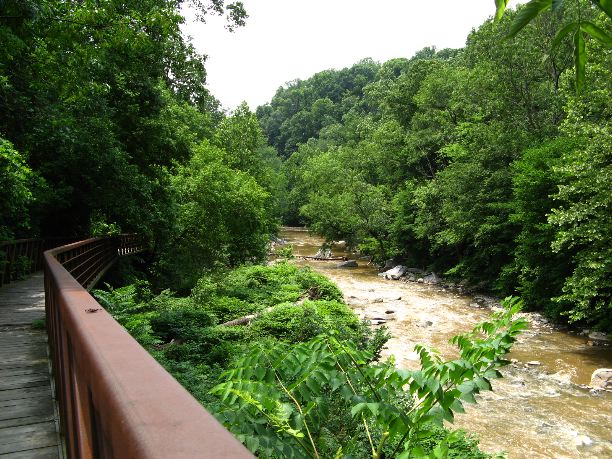
There are several bridges over the Wissahickon, a reminder that civilization is very close:
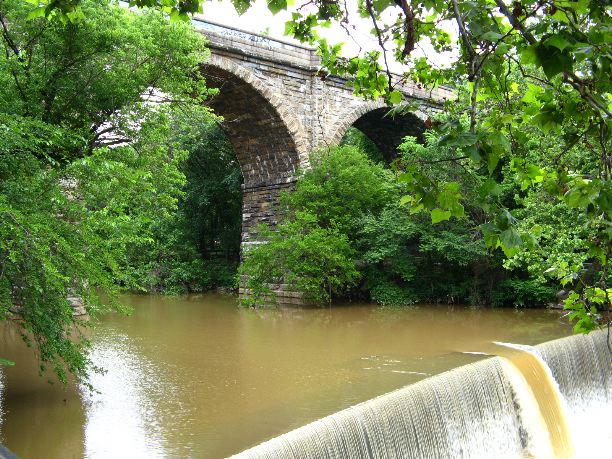
However, the Wissahickon’s bridges are far outnumbered by those over the Schuylkill River. They run every which way:
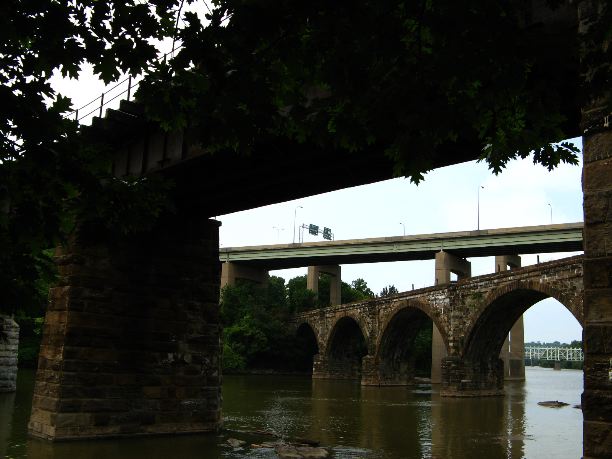
Still miles from my goal, I relished my first glimpse of the Philadelphia skyline ..... and more bridges:
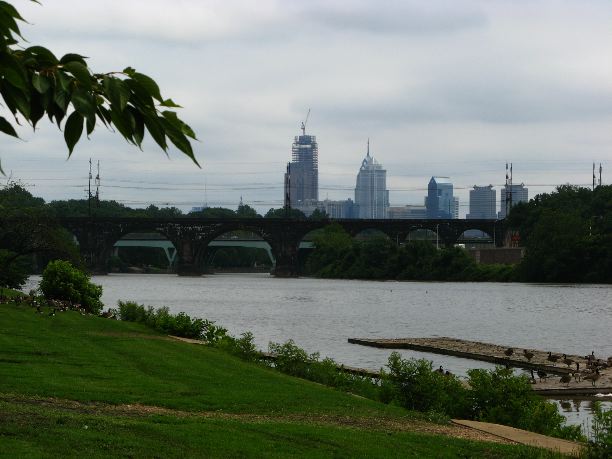
After a lot more pedaling, I was finally in Philadelphia but taken aback by the scene. The photograph I had admired of the Art Museum from the bike path --- that I had hoped to replicate --- was apparently taken from the other side of the Schuylkill River. Moreover, a huge construction project in front of the museum ruled out my intended shot. The one below will have to suffice. Anyway, the statue mimics in a melodramatic way, my euphoria at being here:
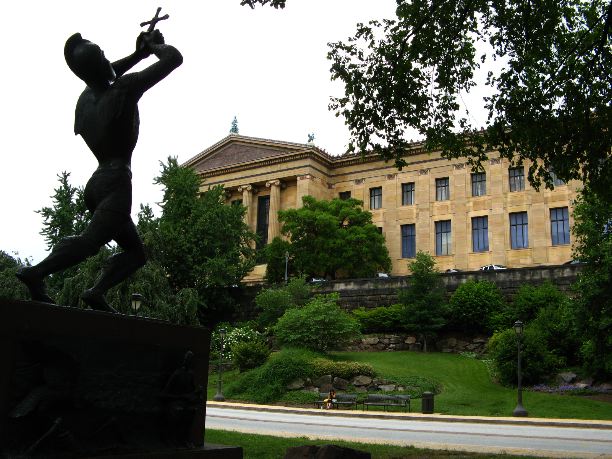
Riding around to the east side of the Art Museum, we have almost the same skyline view as George Washington’s statue:
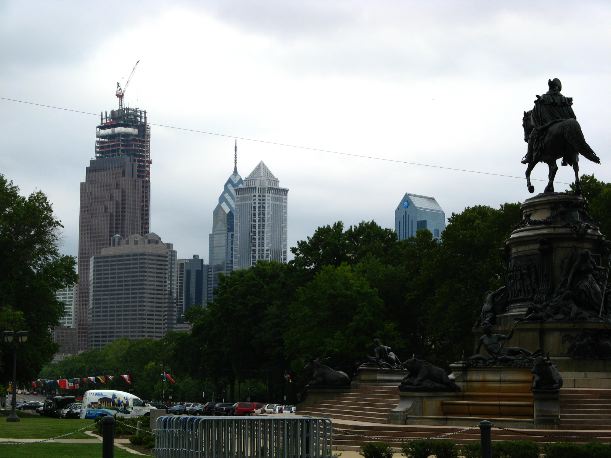
Peeping around George’s right shoulder gives a good view of City Hall in the distance:
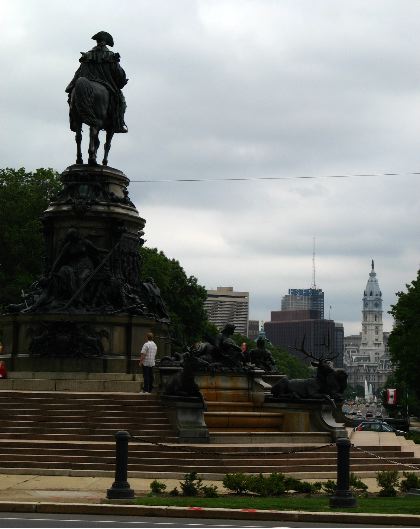
Atop City Hall, the statue of William Penn, the city’s founder, is over 36 feet tall! In the foreground lies the Ben Franklin Parkway:

I hope she got me in her photo, too.
Before heading back, an attractive and peaceful azalea garden made for a welcome rest stop right around the corner from the Art Museum:
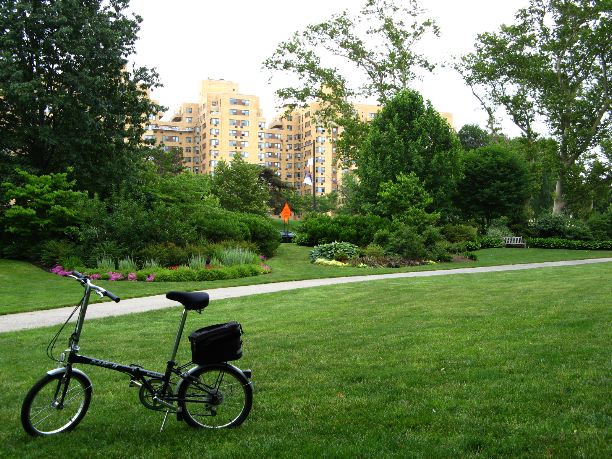
After this refreshing break, the return goes smoothly. With miles yet to go, I declare victory at a most convenient point and, consequently, collect the spoils. Yum!
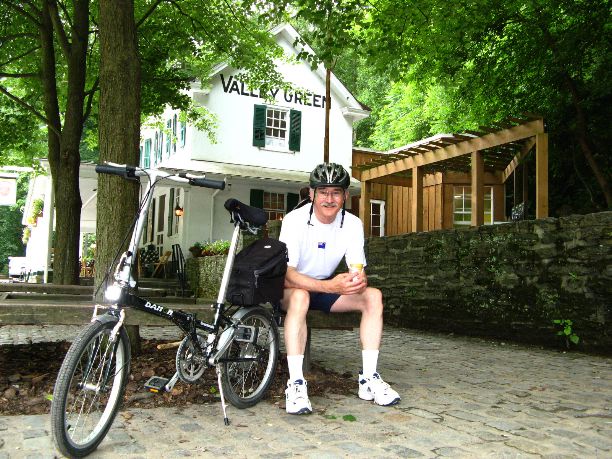
The picture of a happy camper. I’m doubly pleased that I was able to do the ride and that the weather stayed dry.
Two days later, I was back on the saddle again. This final bike ride was on the most unusual rail trail we have ever ridden. The Ironton Rail Trail is a few minutes north of Allentown near the town of Coplay. One lengthy section is in the form of a loop! How that was done with a former railroad track, I haven’t a clue as every other one we’ve seen is linear. Moreover, the asphalt surface is delightfully smooth and a history lesson is thrown in for good measure:
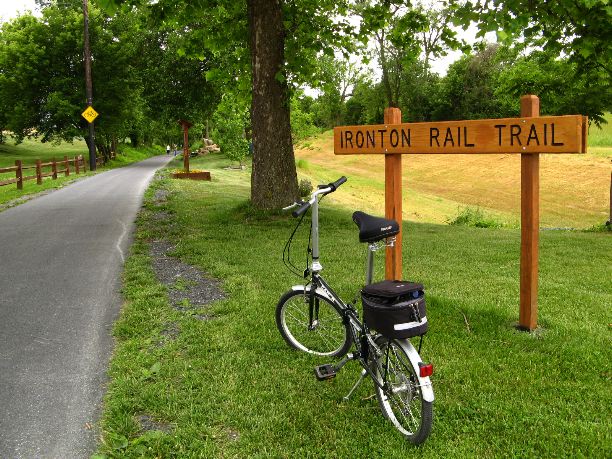
Because of my ignorance of local history, these towering structures in a park along the way were totally unexpected:

As the explanatory sign read, “Coplay made Cement - Cement made Coplay.” Because of the abundance of a local limestone suitable for making cement and nearby coal supplies, by 1900 the Lehigh Valley was producing 3/4 of all Portland Cement used in the country. Had I been standing at this spot then, I would have been in the midst of a smelly, dirty, noisy inferno. Round the clock, smoke and dust belched from these kilns where the inside temperature reached 2000º F. Trains roared in loaded with coal and limestone; workers covered with cement dust scurried everywhere.
Despite the company’s apparent success at cornering the market, just 4 years later the fires of these Coplay kilns went out forever. The reason was the introduction elsewhere of the rotary kiln, an invention that saved both money and labor. The reader is left to ponder the hardships endured by the workers and their families when their jobs disappeared so quickly.
-------------------------------------------------------------------------------------------
As I head for Newark Airport to pick up my sweetheart, I can’t help thinking back on these past eleven days, unique in my life. As a short fill-in activity, they were fun, generally satisfying, occasionally exhilarating, and sure beat working on that honey-do list at home. : ) I will admit, it would have been more enjoyable to share the adventures with a kindred spirit --- had she been home --- which is where I’m ready to go.
“Come on, Patty’s plane, get yourself to Newark!” ... With an electrical storm over the airport causing lengthy weather delays, I have plenty of time to reflect on these last few days ... and I declare them good. Now, let’s get on with our REAL life!